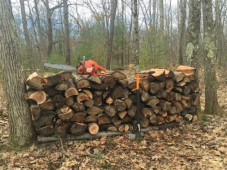The difference is the flexibility of a buffer--a dump load is there to absorb energy on demand, and in this case, give it back later when needed. When the hybrid heat pump is taken into consideration, my hot water heater effectively functions as a 8 kWh battery that only "costs" 2kWh to charge.
My point was simply that most days, we don't have to worry about running the dishwasher during sunny weather, or even daytime for that matter. While I'm
very impressed by
your consumption vs PV production chart, I doubt I could achieve it in my household. Shifting laundry and cooking to daytime (and only sunny weather in winter) hasn't exactly been easy for my family, so it's nice to have one less thing to worry about.
It's easy to forget that we're sharing a global forum. In the US, dishwashers are connected to hot water supply lines. When I lived abroad, I had to un-learn the hot water line purge step, and also remember to regularly add salt (!!).
In our house, it's used daily, at minimum. If my back-of-napkin estimate is close, we probably save close 0.5-1 kWh per load. It's also nice to cut down on those large current spikes.
Care to share details of your wood-fired boiler setup? I'm impressed that you manage to run a dishwasher in winter in your location!





